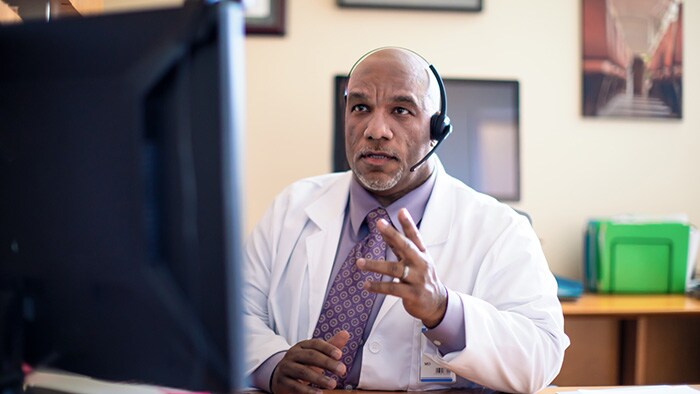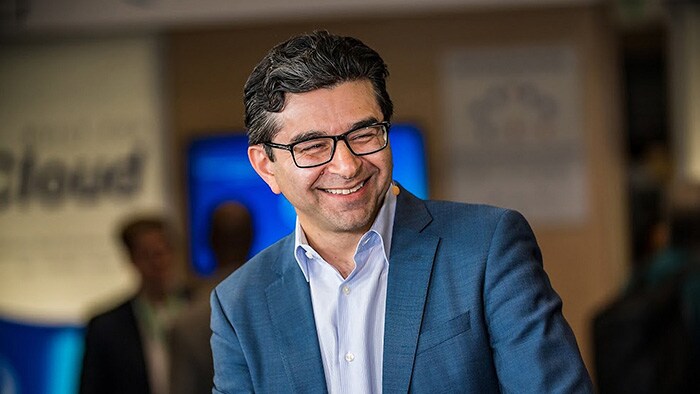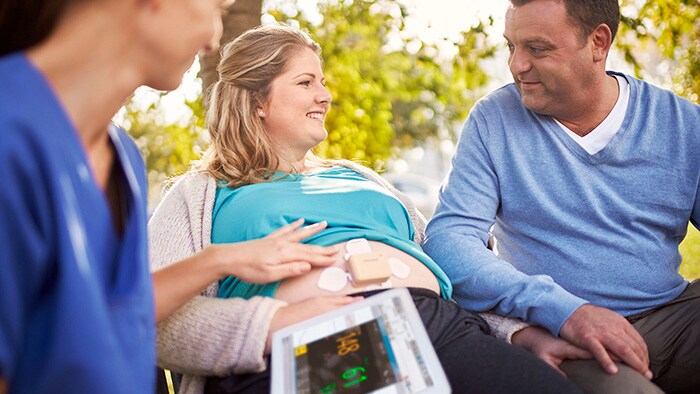Apr 29, 2022 by Philips
Reading time: 4-5 minutes
How engaged patients became the new face of healthcare

People increasingly taking ownership of their own health journey is hardly news. Long gone are the days when patients were, often, passive supporting players in their health experience. Today, technology engages, motivates and empowers people to take control of their own health. An engaged and empowered patient is more likely to listen to preventative guidance, ask questions and seek further information. The benefits of greater engagement for these patients – and healthcare systems – are immense: improved health outcomes, greater satisfaction with the care experience, reduced costs and a better experience for the clinician.
There’s growing recognition of the value of encouraging people to live their best, and healthiest, lives. This, along with incentives increasingly tied to patient outcomes and quality of care, has encouraged us to respond with smart, practical and impactful solutions that can help them do so. But what role have such engaged patients played in transforming healthcare? And why is this important?
Reacting to a growing demand
Healthcare delivery organizations have swiftly responded to the increased demand from patients to play an active part in their journey. At Philips, as a leader in the health technology space, we recognize that the tools we deliver to health systems and providers must streamline their workflows to allow providers to focus on delivering patient care. We partner to find ways to optimize workflows, automating where we can, and delivering insights in a meaningful way, without creating data overload. Our Patient Engagement and Healthcare Analytics offering is a range of solutions that enable clinicians to engage with people across their care journey and deliver personalized care. It helps bridge the gap between stakeholders across care settings, providing accessible data alongside actionable insights.
The offering includes solutions like Philips Patient Navigation Manager which provides regular, automated reminders to patients ahead of their appointment, with instructions on how to prepare and what to expect during their consultation. Philips Questionnaire Manager makes it easier for patients to visualize their current state and treatment progress and share feedback on their care experience. It also allows the patient to update their physician from home, reporting on relevant measurements like weight and temperature. Our goal? Patients are motivated and equipped with personalized information tailored to their care plan, enabling providers to better manage patient populations remotely, which in turn can lead to health systems that are better empowered to manage patient populations remotely in a more efficient way, across acuity levels, conditions and more general wellness care.
There’s little doubt that health systems are reaping the benefits of delivering a superior patient experience by involving and engaging patients. After all, increased compliance to care can go hand in hand with better experiences and outcomes.
Consider the ability to be able to engage in timely communication with patients ahead of their appointment. Better communication can lead to greater patient satisfaction which, in turn, can result in higher retention and greater revenue opportunities. It can also help drive a ‘first time right’ diagnosis, helping patients start their care journey sooner, driving better outcomes. Reduced no-shows and patients who are properly prepared for their procedures support operational efficiencies and help reduce the administrative burden involved in rescheduling those patients. In fact, the entire health system may benefit: with the opportunity for staff to focus on delivering care, they, and their patients, have a better experience all around.
A move to virtual care
Technology has played a crucial role in extending geographic reach and creating more capacity by load-balancing between in-person and virtual visits as appropriate. The COVID-19 pandemic has accelerated how we use technology to integrate in-person and virtual care. It no longer has to be one or the other. After almost two years of living through the pandemic, we’ve seen a notable increase in all types of delivery service models. There’s now a new level of expectation around convenience and access to care at a time and place that suits the patient. To deliver the best care and a superior patient experience, we help our customers smartly leverage technology to help deliver the best care in the care setting that’s right for them, whether in person or virtually. Our Patient Engagement and Healthcare Analytics solutions respond to this need, allowing for healthcare to be delivered in a variety of settings. This allows patients to choose remote care options that suit them. It also ensures that professionals working in different departments, or remotely, have actionable insights and reliable data to inform their decision-making. Being able to access a digital ecosystem of this nature means that both patients and clinicians can engage in the care journey from beyond the hospital walls.
As to what’s next, one certainty is that the demand for the best level of care, at the right time and in the right setting will endure. Equipping clinicians not only with technology, but the training and tools to transform their care delivery to be more efficient and personalized creates a better experience for patients and staff. It’s a win-win for all involved in the care journey.
Share this article
Sign up to receive news and updates from Philips



